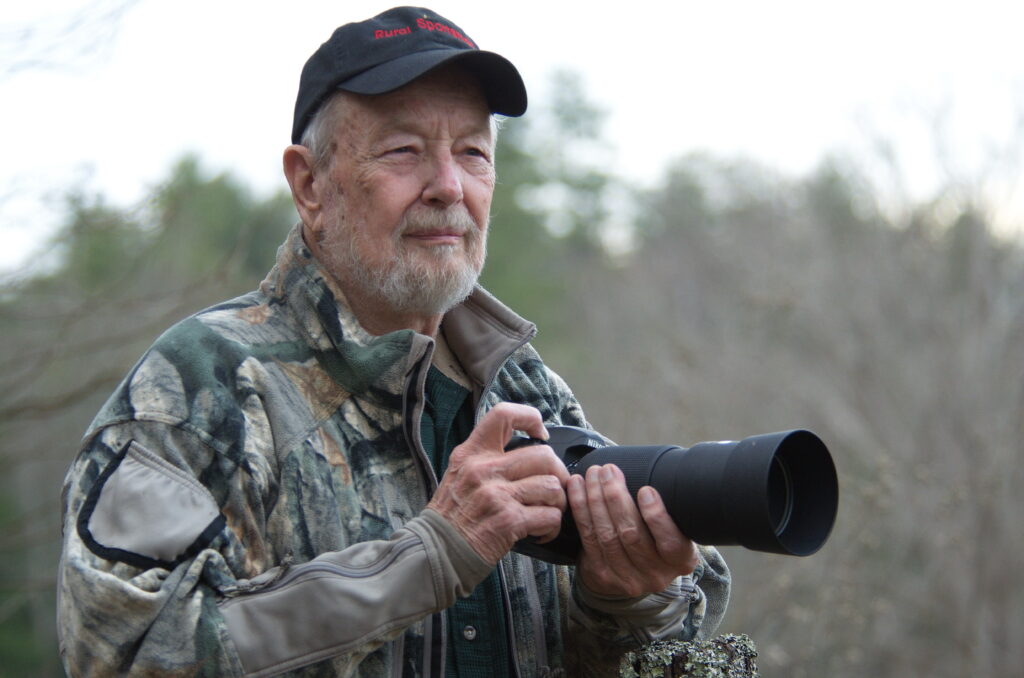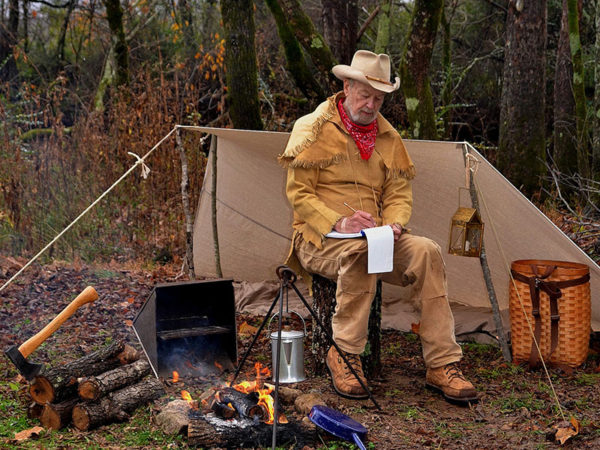ABOUT J. WAYNE
J. Wayne Fears grew up in the Cumberland Mountains roaming around on a mountain named Tater Knob. His dad was a trapper and an expert woodsman, his mom, a country schoolteacher. From his dad, he learned to live in the wilds; and from his mom, he obtained a love of the written word. When other kids were playing team sports, J. Wayne was spending days, often alone, trapping, hunting and fishing. At the age of 15, he obtained the rank of Eagle Scout. While in high school he joined the Army National Guard. He could not believe the government would furnish him ammo to shoot. Following high school graduation, Fears served in the U.S. Army.
After graduating from Auburn University, J. Wayne went to work as a wildlife specialist with the University of Georgia to develop the wildlife resources in a rural test county in South Georgia. The resulting program was published as a feature article in the March 1966 issue of Outdoor Life magazine. This article gave J. Wayne and his work national attention and introduced him to the world of outdoor writing.
The following year, he took a similar job with the Coastal Plain Planning and Development Commission working with nine counties. At the same time, he began writing for outdoor magazines, had a weekly radio program and a syndicated newspaper column.
By 1970, he was in graduate school at the University of Georgia working on his Master’s degree and working with Safari Systems, Inc. which gave him North and South American experience. While in school, he was writing for 11 outdoor magazines.
Since completing his graduate work, he has held a number of wildlife related positions and worked as an explorer. He spent a decade as the chief wildlife manager for Gulf States Paper Corporation. Here he was responsible for the wildlife management and law enforcement on 500,000 acres of forestland, the development of Westervelt Hunting Lodge, big game hunting operations in Colorado, Alaska and British Columbia.
In 1982, he left Gulf States to establish a company called Alabama Backcountry Lodges, Inc, which developed and operated three hunting lodges in Alabama. When the company sold, he became a full time freelance magazine writer and book author. He established a consulting company, Fears & Associates, to do wildlife habitat management and exploration work.
In 1994, Progressive Farmer magazine, the nations oldest and largest farm/ranch magazine asked J. Wayne to work for them as the Editor-in-chief of Rural Sportsman, a wildlife management magazine within Progressive Farmer. He retired from this position in 2005. Soon, he came out of retirement and became the editor-in-chief of Hunting Camp Journal magazine and later Hunt Club Digest.
Currently he serves as shooting columnist for the NWTF Turkey Country magazine and feature writer for American Frontiersman and The New Pioneer magazine. For the past three decades he has written a column for Whitetails Unlimited magazine entitled The Food Plot Doctor. He also freelances to a number of other publications and web sites.
J. Wayne has had over 6,300 magazine articles published and 35 books. He is often a guest on popular outdoor TV programs and is a frequent speaker at outdoor events. Currently he is working on three books.
EDUCATION
- B.S. Degree from Auburn University
- Master’s Degree from the University of Georgia
PROFESSIONAL AWARDS
Journalism
- 2019 – Pinnacle Award – Book – POMA
- 2018 – Pinnacle Award – Book – POMA
- 2017 – Best Outdoor Book – 1st Place – SEOPA
- 2016 – Best Magazine Short Story – First Place – SEOPA
- 2015 – Best Outdoor Book – Third Place – SEOPA
- 2014 – Pinnacle Award – Book – POMA
- 2013 – Best Outdoor Book Award – First Place – SEOPA
- 2013 – Outstanding Achievement Award – Book – POMA
- 2007 – Grits Gresham Communicator of the Year Award – NSSF & POMA
- 2006 – Best Outdoor Entrepreneur Project – Magazine – SEOPA
- 2005 – Best Outdoor Book – Third Place – SEOPA
- 2004 – Best Outdoor Book – First Place – SEOPA
- 2004 – NWTF Communicator of the Year Award
- 2002 – Best Outdoor Book – Third Place – SEOPA
- 1993 – Best Outdoor Entrepreneur Project – Public Relations – SEOPA
- 1993 – Technical Magazine Article – Second Place – OWAA
- 1989 – Best Outdoor Book – Second Place – SEOPA
- 1986 – Best Outdoor Book – Runner-Up – SEOPA
- 1986 – Anschutz-PSI Outstanding Writer Award
- 1985 – Best Outdoor Book – Runner-Up – SEOPA
- 1978 – Best Magazine Article – First Place – SEOPA
- 1976 – Deep Woodsman of the Year Award – Overall Writing – OWAA
- 1976 – Deep Woodsman of the Year Award – Newspaper – OWAA
- 1976 – Buck Knives Writing Award – Newspaper – OWAA
Other Professional Awards
- 2022 – Inducted into the Georgia Hunting & Fishing Hall of Fame
- 2017 – Inducted into the Legends of the Fly Hall of Fame
- 2017 – Inducted into the Huntsville/Madison County Athletic Hall of Fame
- 2012 – Inducted into the Legends of the Outdoors Hall of Fame
- 2004 – Governor’s Conservation Achievement Award – Communicator of the Year
- 2001 – Outstanding Conservationist– USDA Soil & Water Conservation Districts Association
- 1982 – Distinguished Alumni Award – University of Georgia
- 1981 – Tom Rollins Award – SEOPA
PROFESSIONAL ASSOCIATION ACTIVITY
Professional Outdoor Media Association
- Past President 2006-07
- Founding Board Member
- Chairman: Intern/Mentoring Committee
Southeastern Outdoor Press Association
- Chairman of Board – 1975-76
- President 1973-74
- Board member 1971- 73
- Chairman of numerous committees
Outdoor Writers Association of America
- Board Member 1979 – 1982, 2003 – 2005.
- Chairman of numerous committees.
Georgia Outdoor Writers Association
- Founding member – President 1970 – 71
- Chairman of Board 1971-72
The Wildlife Society
- Certified Wildlife Biologist
The Explorers Club
- Led five scientific expeditions – voted into club in 1982
Georgia Parks & Recreation Society
- Board of Directors
Georgia Recreation Commission
- Licensed Recreation – Administrator – #14
- Advisory Board – 1968 – 1970
Freshwater Fishing Hall of Fame
- Board of Advisory Governors
American Mountainmen
- Inducted 1975
Longhunter Society
- Founding Committee
National Rifle Association
- Life Member, Instructor – rifle, pistol, shotgun
BOOKS PUBLISHED
- A Tater Knob Almanac – Bannock Books/Kindle
- The Scouting Guide to Survival – BSA/Skyhorse Publishing
- The Lodge Book of Dutch Oven Cooking — Skyhorse Publishing
- Isaac – Trek to Kings Mountain – Bannock Books/Kindle/Nook/audible
- Chipmunk, Punky, Sometimes Jenny and Me – Bannock Books/Kindle
- Buck & Wart – Backcountry Letters – co-author- Bannock Books/Kindle
- Fish Canning Made Easy, Kindle Book
- The Complete Book to Making Jerky – Kindle Book
- Deer Hunter’s & Land Manager’s Pocket Reference – Skyhorse Publishing/Kindle/Nook
- How-to Lost Proof Your Child – Kindle Book
- The Complete Book of Making Jerky at Home – Kindle Book
- How-to Manage Native Plants for Deer – Pro Tool Publishing
- How-to Hunt Clear Cuts Successfully – Pro Tool Publishing
- The Complete Book of Dutch Oven Cooking – Skyhorse Publishing/Kindle/Nook
- The Pocket Survival Guide – Skyhorse Publishing/Kindle/Nook
- Hunt Club Management Guide – Skyhorse Publishing/Kindle/Nook.
- Hunting Whitetails East & West – Co-Author- Skyhorse Publishing/Kindle/Nook
- Build Your Dream Cabin in the Woods – Skyhorde Publishing?Kindle/Nook
- The Complete Book of Outdoor Survival – Krause Publications
- The Field & Stream Wilderness Cooking Handbook – Globe Pequot Press
- The Canoer’s Bible – Co-Author – Doubleday
- Hunting Big Bears – North American Hunting Club
- Hunting Whitetails Successfully – North American Hunting Club
- Muzzleloading Hunters Handbook – CVA Publications
- Cooking the Wild Harvest – ICS/Stackpole Books
- The Wild Turkey Book – Amwell Press
- Successful Turkey Hunting – Target Communications
- The Complete Book to Canoe Camping – Winchester Press
- Sportsman’s Guide to Swamp Camping – David McKay Publishers
- Trout Fishing the Southern Appalachians – East Woods Press
- Turkey Guide – Scotch Publications
- Scrape Hunting from A to Z – Derrydale Press
- Backcountry Cooking – East Woods Press
- Recreation Resources Management Manual – CPAPC Publications
- Planting for Wildlife – Southern Progress Publications
MEDIA EXPERIENCE
Some Magazines in Which Work Has Been Published:
- GunHunter
- Whitetail News
- The New Pioneer
- American Frontiersman
- Whitetails Unlimited
- North American Hunter
- Great Days Outdoors
- Turkey Country
- Backpacker
- Outdoor Life
- Shooting Times
- Bowhunting World
- Petersen’s Hunting
- Field & Stream
- The Trapper
- North American Hunter
- Guns & Ammo
- Canoe
- Sports Afield
- Farm Journal
- SHOT Business
- Progressive Farmer
- Southern Outdoors
- Turkey Hunter
- American Hunter
- Seventeen
- Turkey Call
- American Rifleman
- Buckmasters
- Woodall’s Camping
- Game & Fish
- Fur-Fish-Game
- Muzzle Blasts
- Predator & Prey
- Hunting Camp Journal
- Aqua/Field
- Cabela’s Outfitter Journal
- Mature Living
Newspaper
- Quitman Free Press (GA) – Outdoor Editor
- Valdosta Times (GA) – Outdoor Editor
- Syndicated weekly outdoor column to 20 Georgia newspapers
- Greenville News (SC) – Outdoor contributor
- Tuscaloosa Graphic (AL) – Outdoor Editor
- Anniston Star (AL) – Outdoor Editor
Radio
- WSFB, Quitman, GA, “Georgia Outdoors” 30-min. twice weekly
Television
- WMAZ_TV, Macon, GA- guest host – Southern Outdoors, twice weekly, 30-min.
- 15 weekly segments on Benelli American Safaris for two years, aired nationally regarding survival and wildlife management.
- Guest host on numerous national TV outdoor shows – T/C Game Trails, NWTF Get in the Game, NWTF Turkey Call, Benelli’s American Safari, Southern Sportsman.
COMMERCIAL/VIDEO/DVD
- “How to Hunt Wild Turkey” – Warburton Productions & Chevy Trucks
- “The Secrets of Successful Food Plots” – Mossy Oak Productions
- “The Complete Hunter” – Smith/Taylor Productions
- “Backcountry Lodges” – Denny Productions
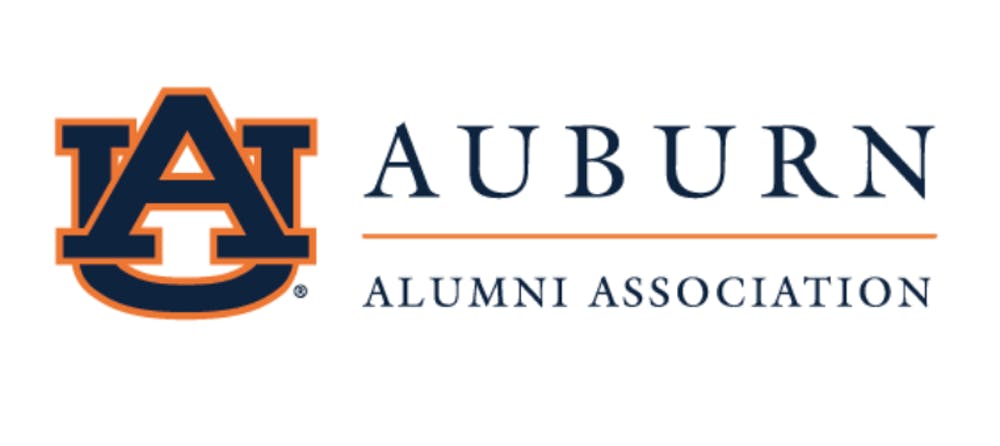
ALUMNI SPOTLIGHT
Editor’s Note: The article below appeared on the Auburn University Alumni Spotlight page. J. Wayne Fears is a 1964 graduate of Auburn University
WILD LIFE: J. WAYNE FEARS ’64
By Derek Herscovici
It wasn’t until the plane had left that J. Wayne Fears knew something was wrong. The wilderness survival expert had charted a trip deep into uncharted British Columbia to explore a potential hunting range. He would canoe a tributary of the Stikine River through the Cassiar Mountains to an extraction point further south.
Except, the creek he had to navigate was too shallow for a canoe. The gear he had paid the pilot for amounted to a duffel bag full of literal garbage. He hadn’t seen or heard a plane in days, had no axe to keep firewood going and had to fend off a grizzly bear that entered his camp every night. It was late August and getting cold. Ostensibly a two-day trip, it was now day 15. No one was coming.
“That morning, I was studying a map; it was a week-long hike across some of North America’s most difficult terrain,” recalls Fears. “I was going to try to walk out of there as best I could, or at least die trying.”
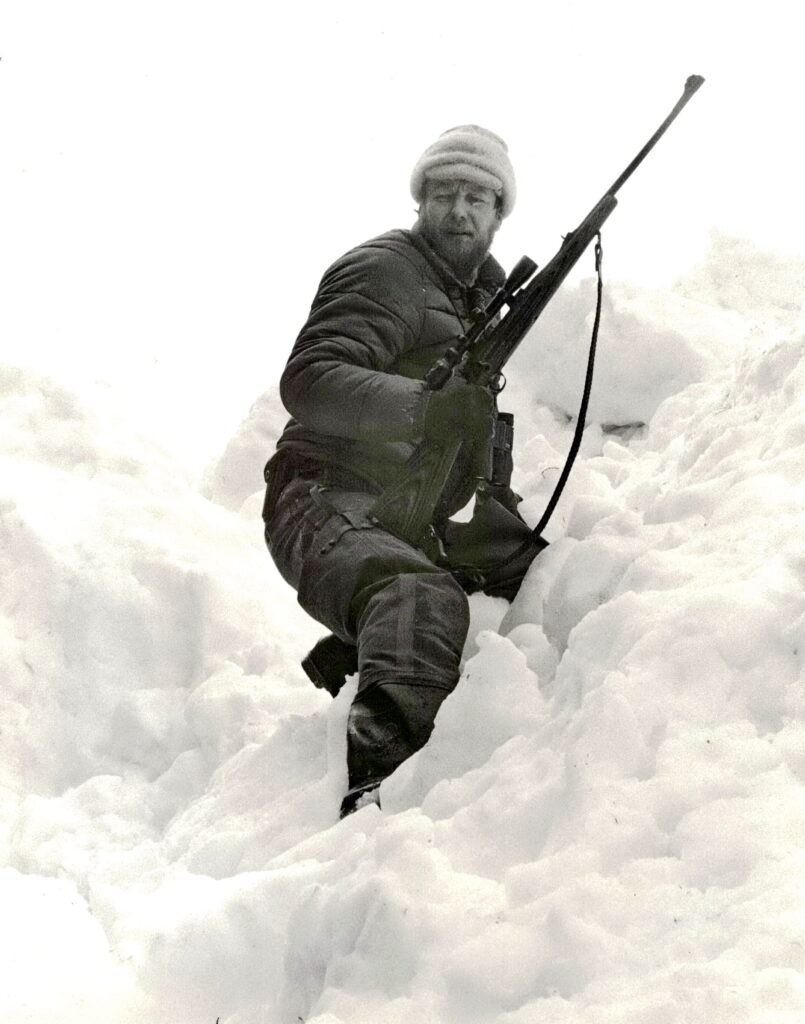
In the outdoor business, his name is legend. Forest Recreation Manager with the Gulf States Paper Corporation for 9 years Fears helped establish hunting and fishing opportunities throughout North America.
A prolific writer as well, in his lifetime Fears estimates he’s had published over 6,200 articles and 33 books on hunting, fishing, wilderness survival and beyond. When asked where he continues to find the inspiration, his answer is simple: “I’m actually out there doing it all the time.”
Growing up in the Cumberland Mountain region of north Alabama, hunting and fishing were not just outdoor diversions, but critical parts of his family’s survival.
“My dad was a trapper, and my mother was a rural schoolteacher, so we didn’t have any money,” recalls Fears. “But as far back as I can remember, I’d been helping my dad do things around our little farmstead, run his trap lines and fish. We lived off the land, and I can’t remember when it wasn’t fun.”
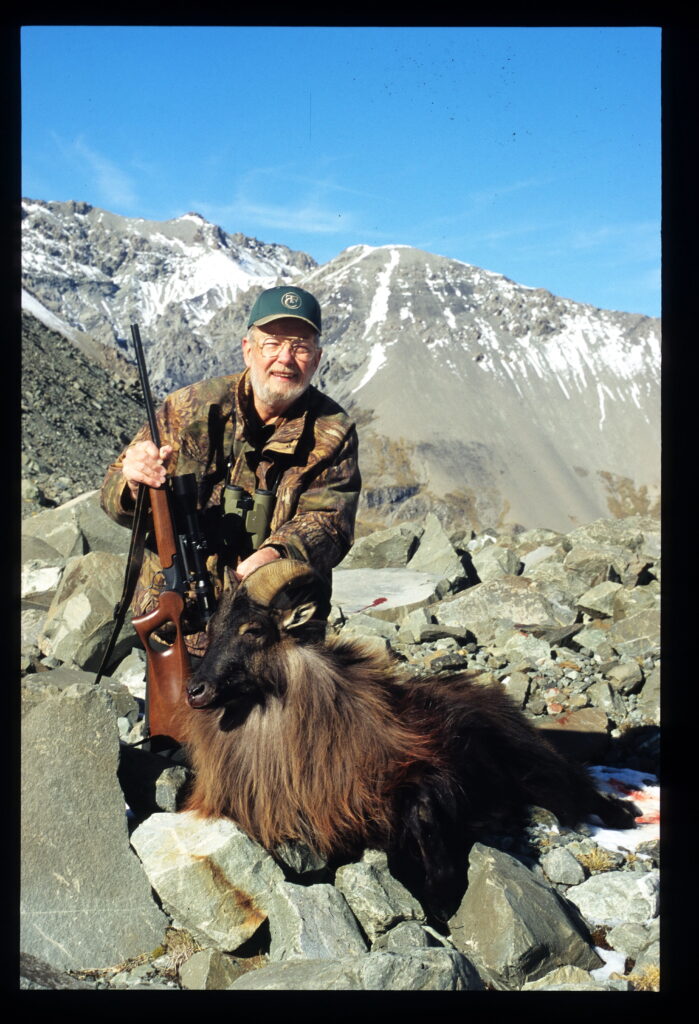
Running traplines to and from school, Fears was a self-professed “nasty little kid who probably smelled like skunk a lot of times in class,” but the outdoors went hand-in-hand with everyday life.
Equally as formative were the Boy Scouts of America, where his scoutmaster took his knowledge of the outdoors to the “next level,” teaching them navigation, advanced camping skills and cooking with a Dutch Oven. Fears made the Boy Scouts’ highest rank of Eagle at the ripe old age of 15. For his Eagle Project, he organized a cleanup of the Flint River watershed, an important part of his own life.
“I grew up on that river — ran trot-lines on it, fished it, learned how to swim in it. To me, it was just taking care of one of the resources that had been so important to me as a kid.”
Fears entered the Army the day after graduating high school and pondered a military career, but the call of the wild proved too strong. After reading about careers in the fields of ‘wildlife habitat management’ — the first of their kind — he sought a place that could provide him the necessary education to enter the field. The only problem was, no programs like that existed at the time.
“This was back in the early ‘60s, and there were no universities that had majors or degrees in wildlife habitat management and outdoor education. But Auburn had the best reputation in land management, and that was the reason I selected Auburn.”
A foray into forestry didn’t pan out, but after meeting with his advisors, Fears, with their help, created a curriculum he felt would help him accomplish his personal goals, combining agronomy, zoology, soils, botany and much more. He took 23 hours a quarter and was driven to graduate as quick as possible.
“I wasn’t there to go to fraternity parties and football games, I was there to learn as much as I could and get out and go to work.”
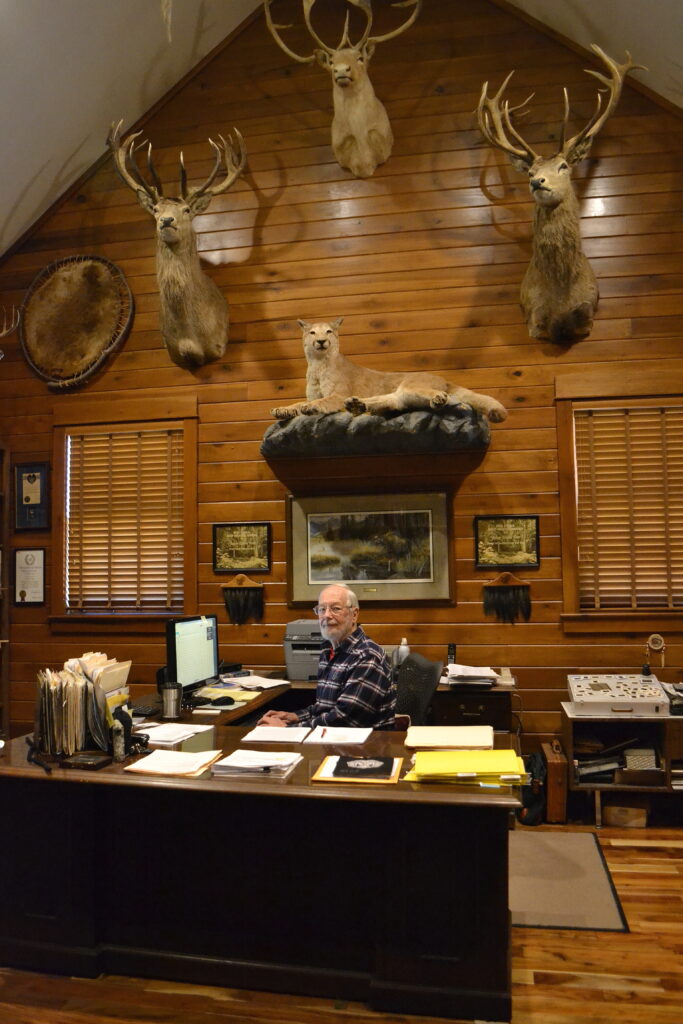
By far, the land management courses were his favorite. Excised of mind-numbing core curricula, Fears relished the opportunity to get out into the field during “lab days” and get his hands dirty. Despite his own enthusiasm, his counselors were apprehensive that he would find a career with the diverse courses he was taking.
After graduating from Auburn, Fears landed a job directing a project sponsored by the University of Georgia to help rural landowners manage their land and water resources, with the goal of opening up the area up to paying hunters and fishers to provide an additional income to the low income county. Fears often needed to study how to do things the night before he did them, but had enormous fun doing it. In short order, Outdoor Life magazine sent legendary outdoor writer Charlie Elliot to profile their efforts.
“Charlie Elliot was the major writer of outdoor life when I was a kid, and I used to love reading his stuff; I never thought I’d get to meet the man, much less get to know him firsthand.”
When the Outdoor Life feature was published in the March ’66, it changed Fears’ life forever.
“It gave me exposure I never would have gotten; nobody had ever heard of J. Wayne Fears, and that article, being in a big national magazine, launched me into the next step of my career, which was to take eight South Georgia counties and do the same thing.”
That cooperative effort between the Georgia Game & Fish Commission, the U.S. Fish & Wildlife Service and several other government agencies lasted three years. During that time, they converted rivers into canoe trails, developed public hunting & fishing areas and designated the Okefenokee Swamp a national wilderness area.
After three years, Fears realized he needed a master’s degree to take his career to the next level. At the same time the University of Georgia approached him about being the “guinea pig” for their new outdoor recreation master’s program.
“One thing grew on another, but it was that fantastic land management background from Auburn that made it all work.”
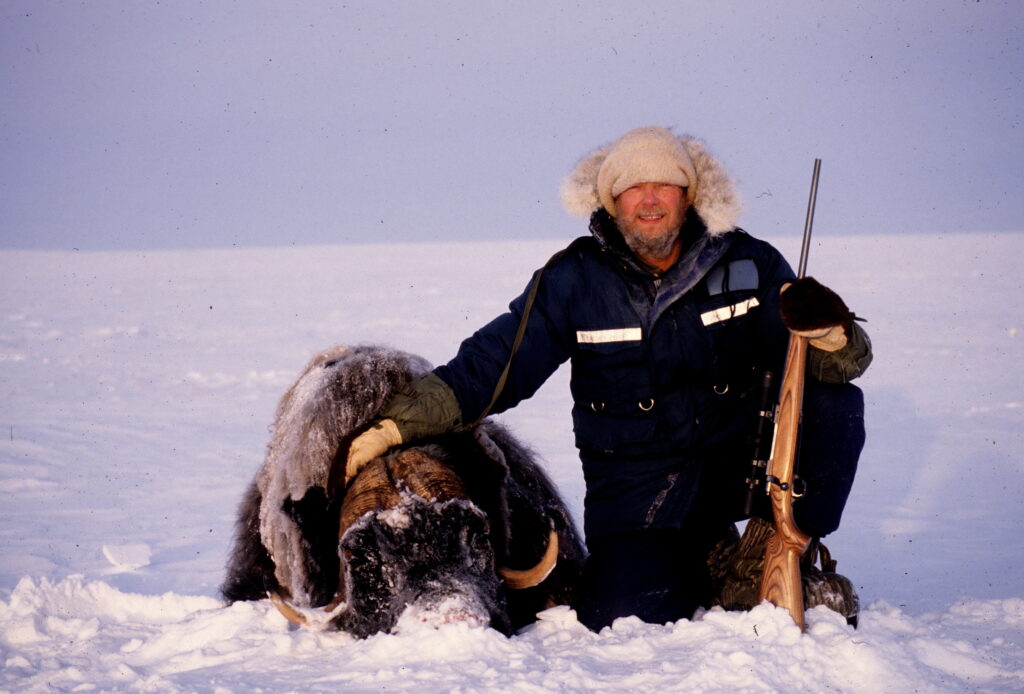
By 1974, Fears had built a growing (and glowing) reputation for himself. When the Gulf States Paper Corporation (now Westervelt Co.) approached him to help lead a new Forest Recreation division of their company, he jumped at the chance.
“They owned a half-million acres in Alabama. I was used to starting new projects, so I said I’d do it; wasn’t sure if I could do it, but I thought I’d try.”
As division head, Fears began setting up the first executive-style hunting lodges east of the Mississippi. He traveled to Texas to learn how to build and run the lodges and manage the half-million acres for quality hunting leases.
After that, Fears went to Colorado to set up a pack-in hunting and trout fishing operation atop the Rocky Mountains. Then he traveled to Alaska and British Columbia to set up hunting operations there. At the head of the Matanuska Glacier, Fears and his team learned to hunt the area, how to feed people in remote camps, how to guide hunters; everywhere they went, they were breaking new ground, with plenty of adventures along the way.
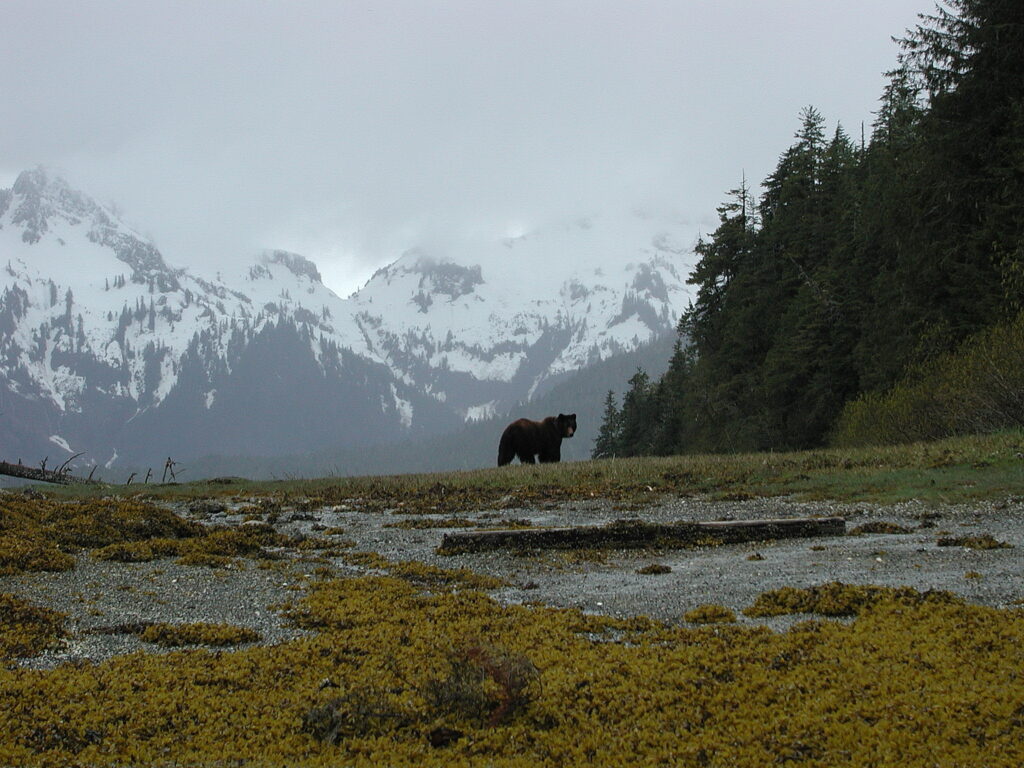
“At the same time, I’m writing for several outdoor magazines,” says Fears. “[After] every trip when I’d get back to the office in my home, I had all these new adventures, so I’d just query those editors and say, ‘how about an article about how this guy got hopelessly lost and survived.’ I always had new material.”
Some of Fears’ stories seem larger than life: abandoned by their Inuit guides on Baffin Island, near Greenland, after their cook supposedly insulted their ancestors; being lost over the Arctic Ocean in a Super Cub; running search-and-rescue missions for hunters who had nervous breakdowns. All true.
Fears had several years of exploring experience under his belt when the charter plane left Watson Lake in the Yukon for the Cassiar Mountains, so it seemed perfectly reasonable to keep the solo expedition quiet. But as the plane kept circling the lake that would be his starting point, he felt a growing sense of unease. By the time he realized the pilot had left him on an uncharted lake with no gear, the plane was already gone. He hunkered down at an old Cree Indian campsite and decided to wait.
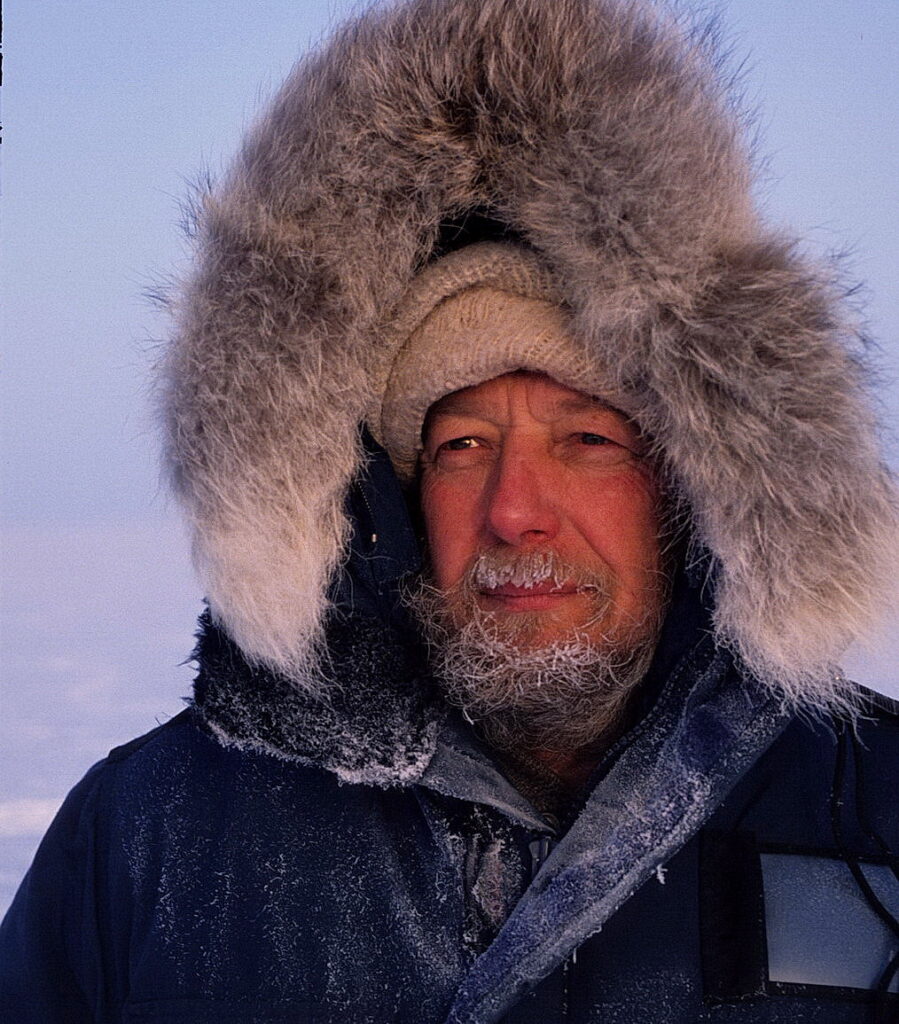
“This is before the days of GPS and satellite radios, but I thought, ‘this can’t be too bad.’ I had been working in the arctic and Alaska by then; I always carried a little two-man tent and sleeping bag in a pack, and I always carried a rifle with me and a pack fly-rod. I also had a little survival kit; I thought I’d be alright.”
Fifteen days later, things were getting desperate. Not having seen even a vapor trail from a plane, he thought his mind was playing tricks when he heard the drone of an engine high above. Grabbing a red shirt tied to a pole, he flagged down the plane and paddled out to make his escape. Fears’ rescuers were a supply team working for a gold mine in southern Yukon that had flown off-course to avoid a snowstorm. If not for this meteorological twist of fate, they never would have crossed that desolate lake.
Stories like these were a publishers’ dream and Fears continued contributing thousands of articles and photographs to a wide variety of publications. He still has dozens of articles published annually.
As an editor of Rural Sportsman — a magazine-within-a-magazine published inside Progressive Farmer magazine — for 11 years Fears’ articles were read by over 650,000 subscribers. When Progressive Farmer developed the National Wildlife Stewardship Awards Program, Fears had the opportunity to meet many of his readers in person as chief judge of the awards program.
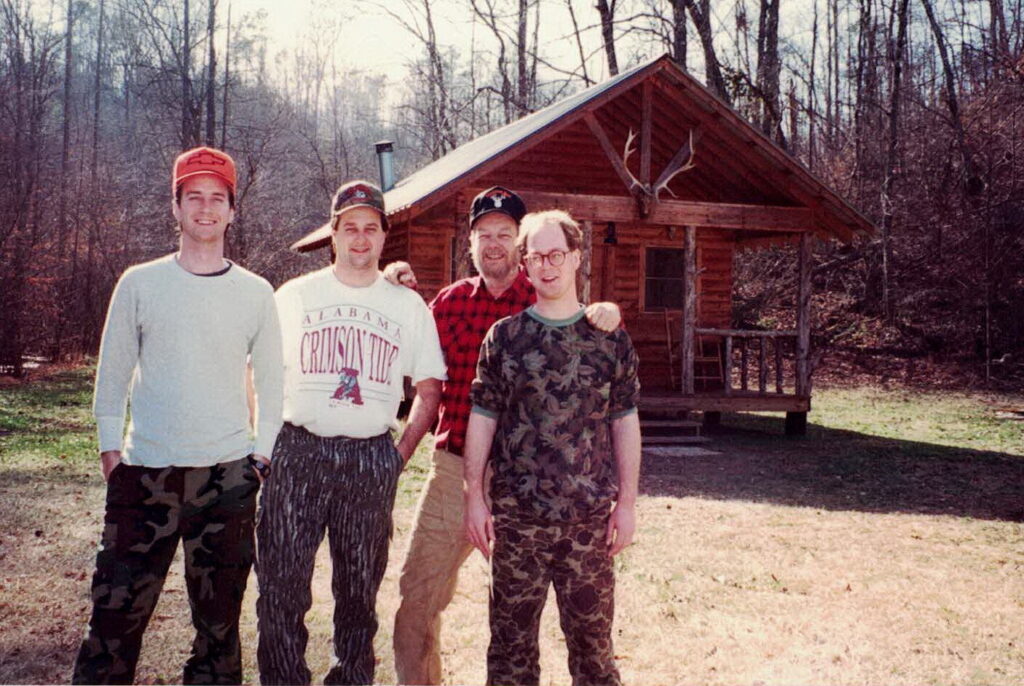
The more Fears wrote, the more they wrote back. Whenever a new issue of the Progressive Farmer came out, he often received up to 600 emails and letters wanting to know more.
The letters let him know what readers were passionate about and helped guide future articles. The article that drew the biggest response, however, had little to do with adventure.
When Fears’ daughter, Carla Fears Schmit, passed away from multiple sclerosis in 2017, he wrote a tribute to her that was later republished in magazines and newspapers around the country.
“She was really avid at the outdoors,” Fears recalls. “Before she passed away, it got so she couldn’t get out and do that stuff. I wrote an article about her passion for the outdoors; even when she couldn’t walk, she would still want to go deep-sea fishing, or she would still want to go and spend time out on the shooting range. It was very personal for me to write the article, but I was overwhelmed with letters and emails — and it was thousands of letters and emails.”
Fears dedicated his book “How to Build Your Dream Cabin in the Woods” to Carla.
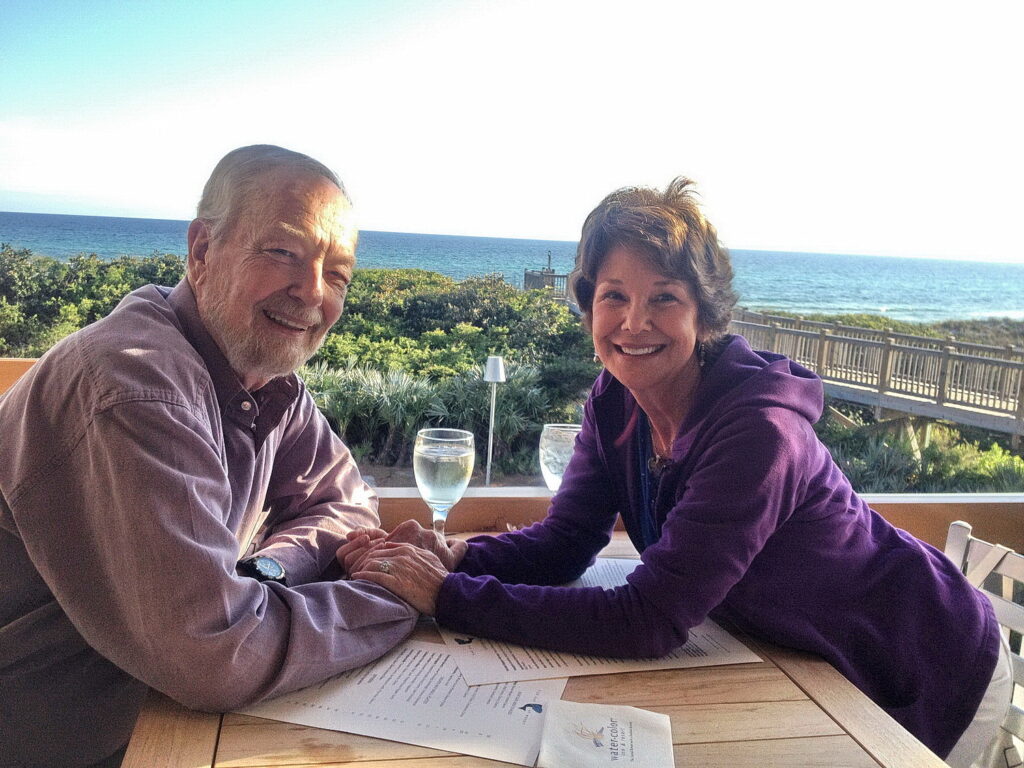
Though his book career is replete with outdoor-related titles — “Hunting Whitetails East & West,” “Lost-Proof Your Child” and more — his culinary career stands out for both its breadth and scope.
Food was always a critical aspect of every backcountry expedition, particularly when traveling in large groups, and Fears inadvertently learned to cook early on. Starting with an article entitled “How to Make Jerky at Home,” he soon published books like “The Field & Stream Wilderness Cooking Handbook,” “Backcountry Cooking,” and more. His compilation of the best game recipes from all 50 U.S. states and Puerto Rico for “Cooking the Wild Harvest” became an international outdoor bestseller.
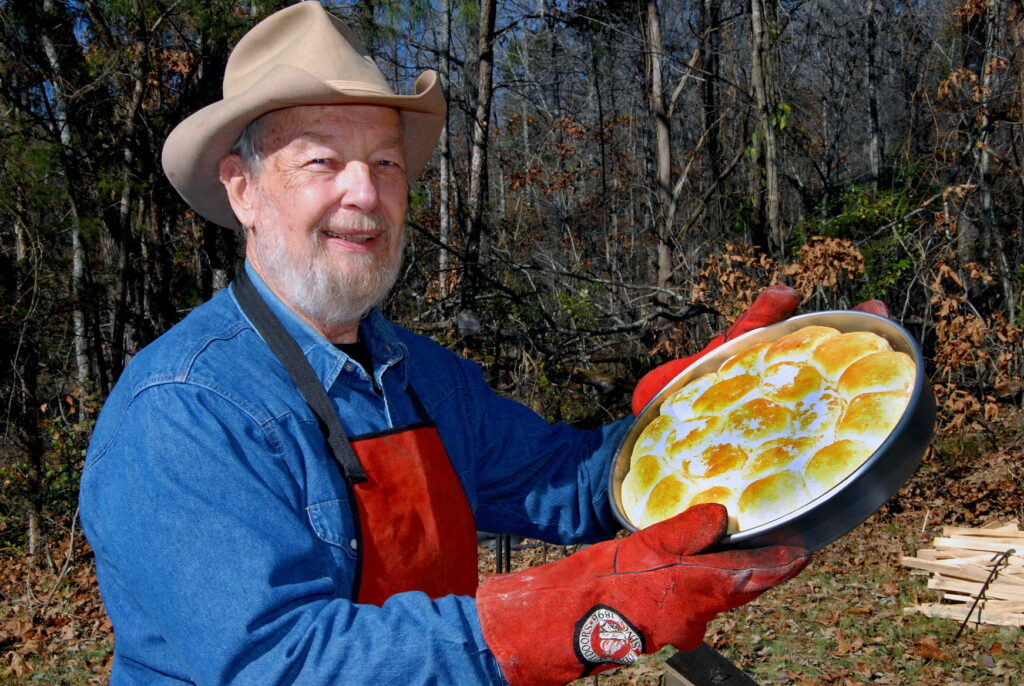
But it was the Dutch Oven — learned from his days with the Boy Scouts — that really took off. His most recent cookbook, “The Lodge Book of Dutch Oven Cooking,” has so far been translated into four languages and is sold around the world.
His most recent book “The Scouting Guide to Survival” won the 2019 Pinnacle Award, the Professional Outdoor Media Association’s top prize. It was Fears’ third time winning it.
He also dabbles in writing historical fiction and is working on a sequel to his immensely popular book “Isaac: Trek to King’s Mountain” about the battle that turned the tide of the Revolutionary War.
Yet, no matter how far his adventures take him, he never forgets the foundation at Auburn that put him on the right path.
“They were willing to run a risk on an unknown country boy, to help me put together a curriculum that was what I wanted — I will always be indebted to them for that.”
